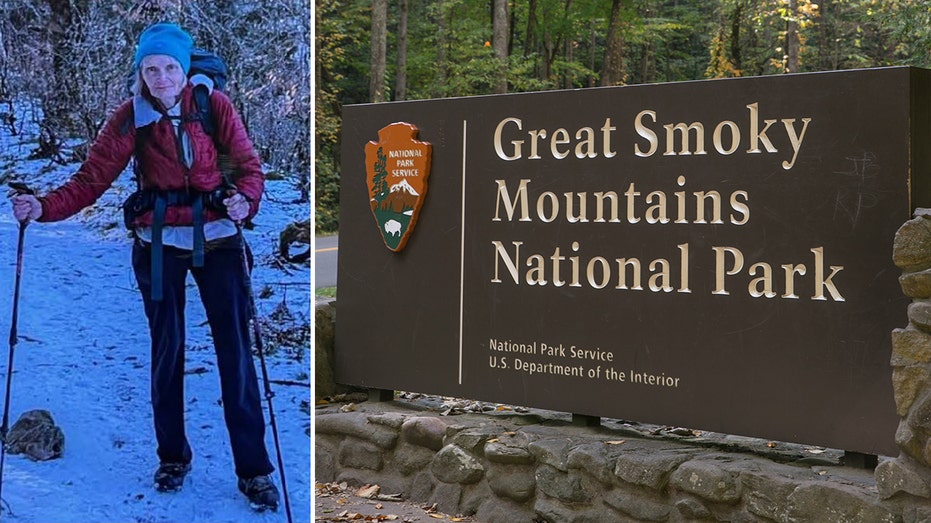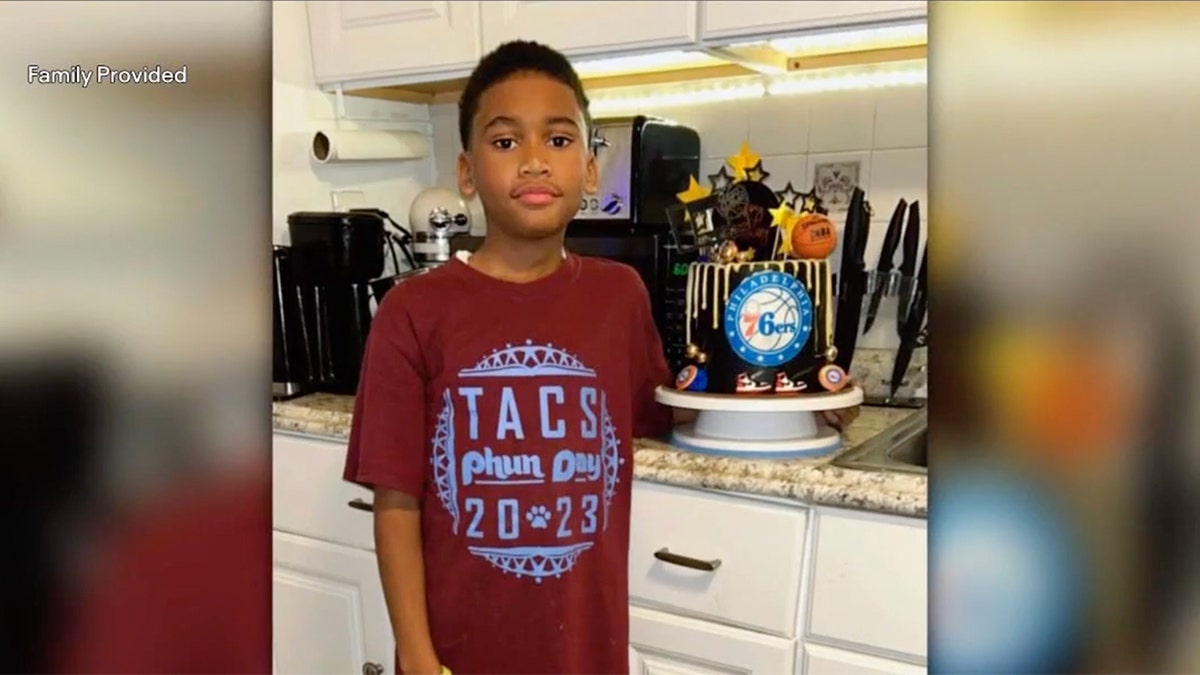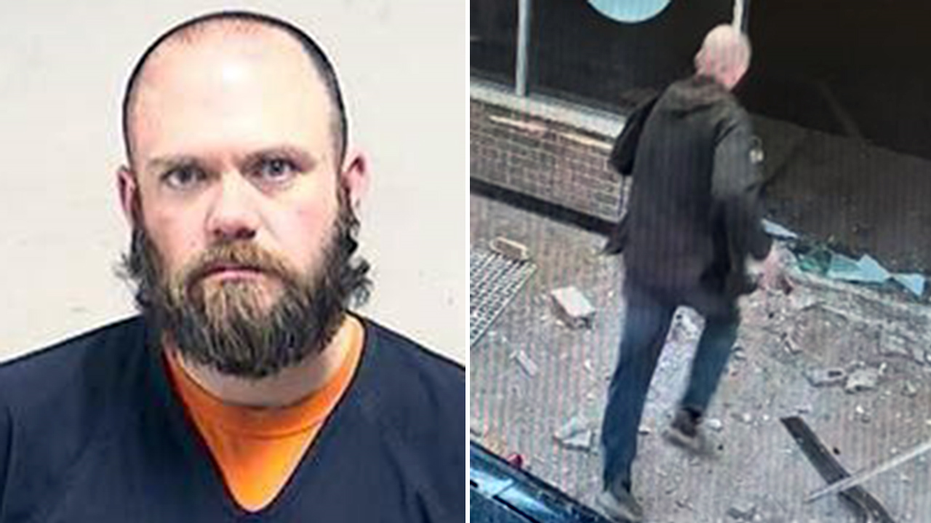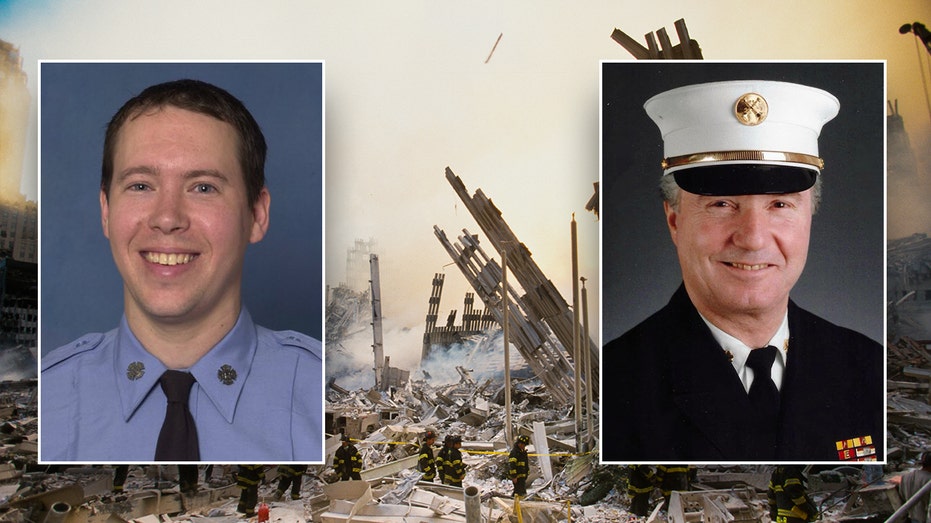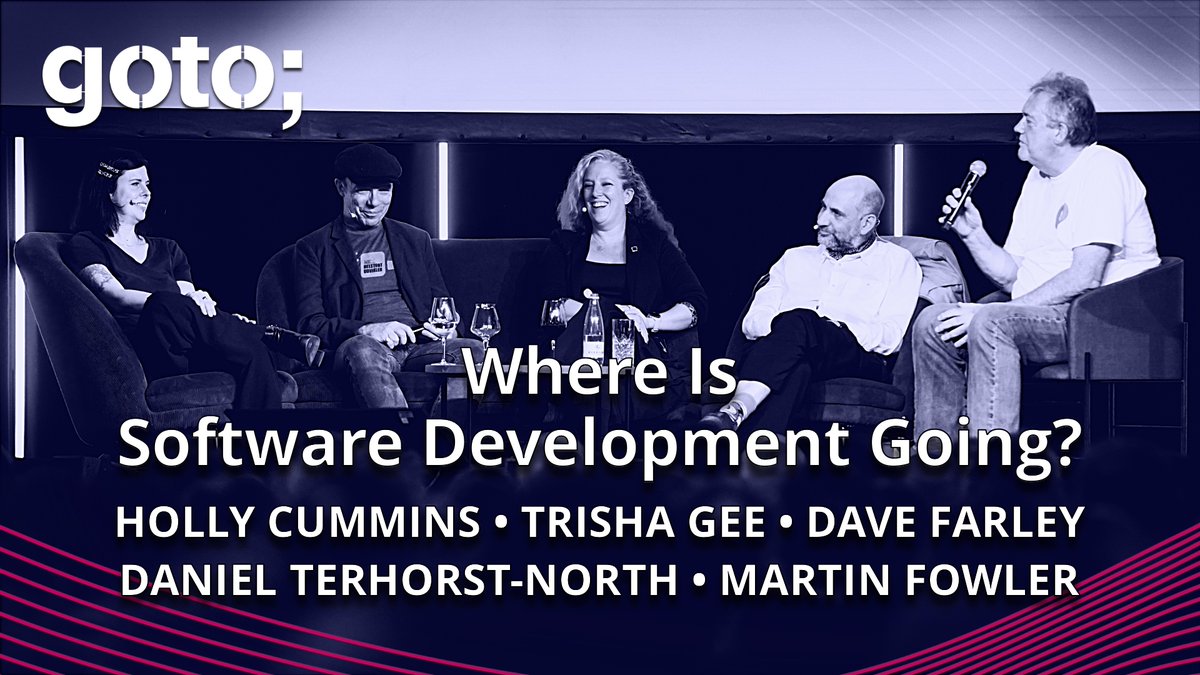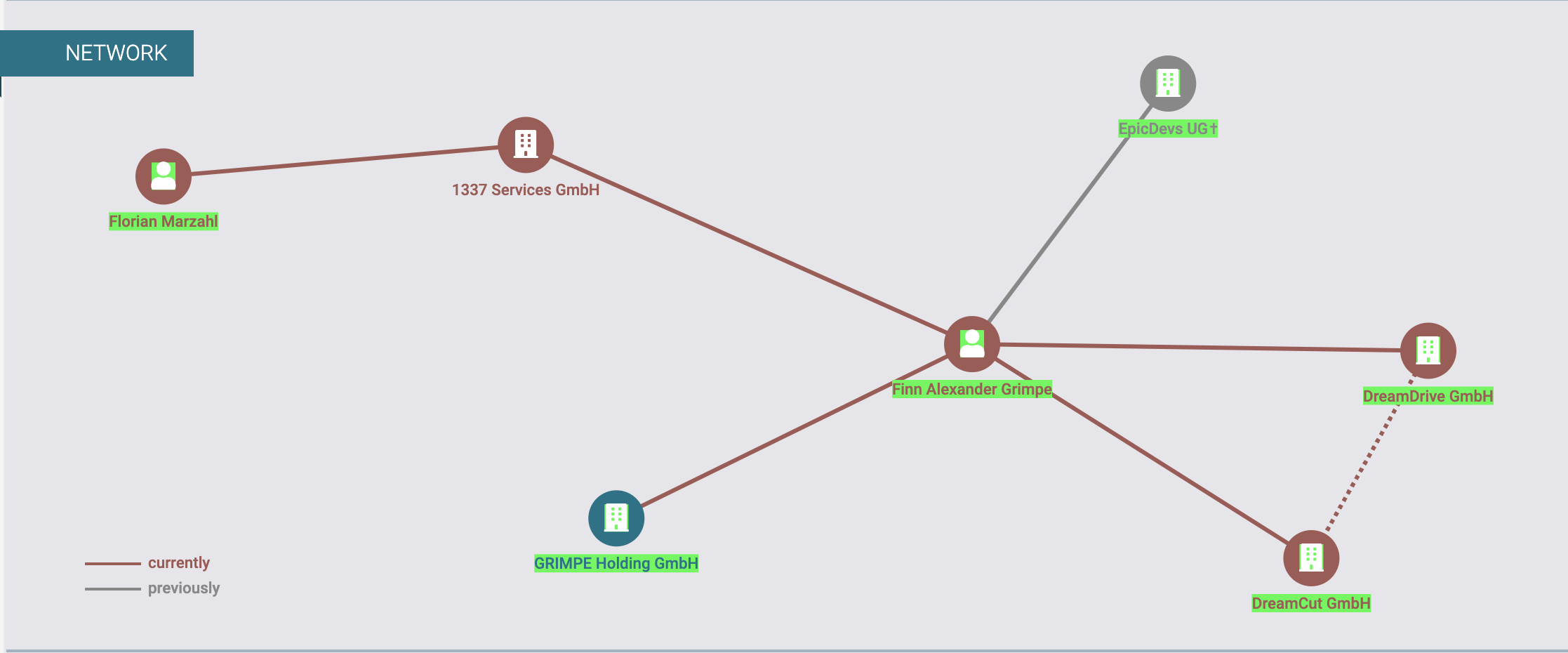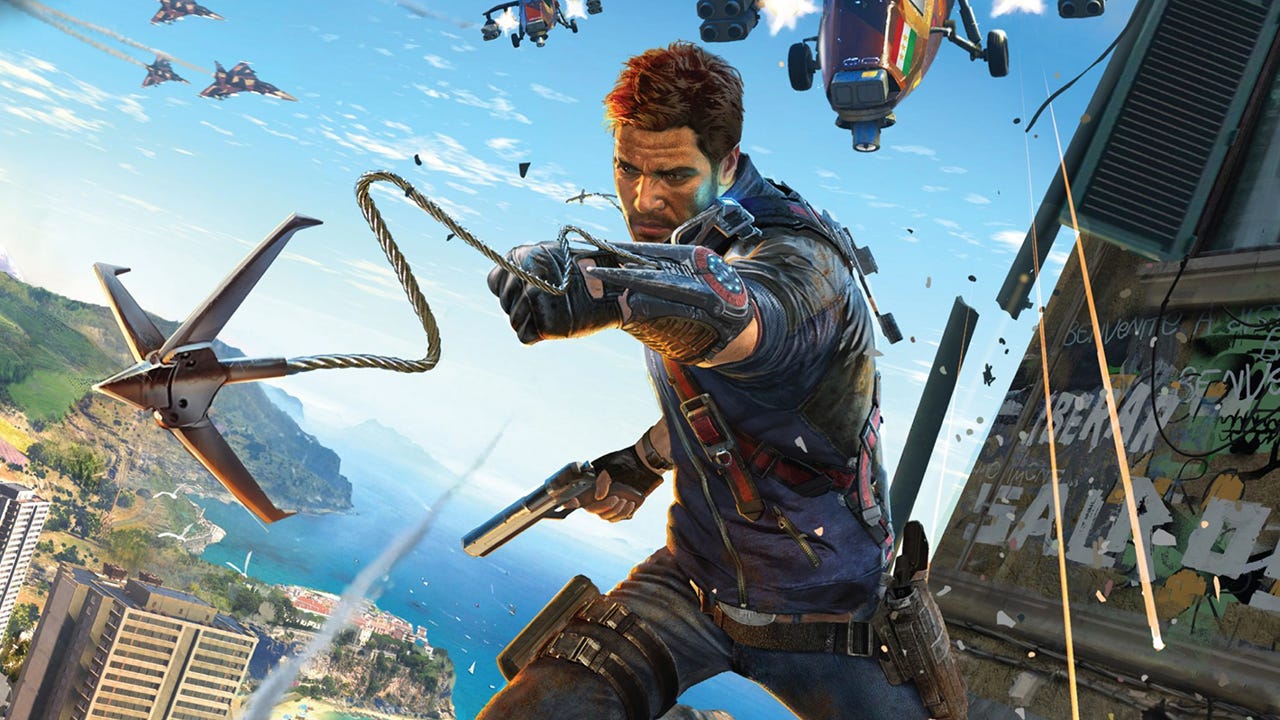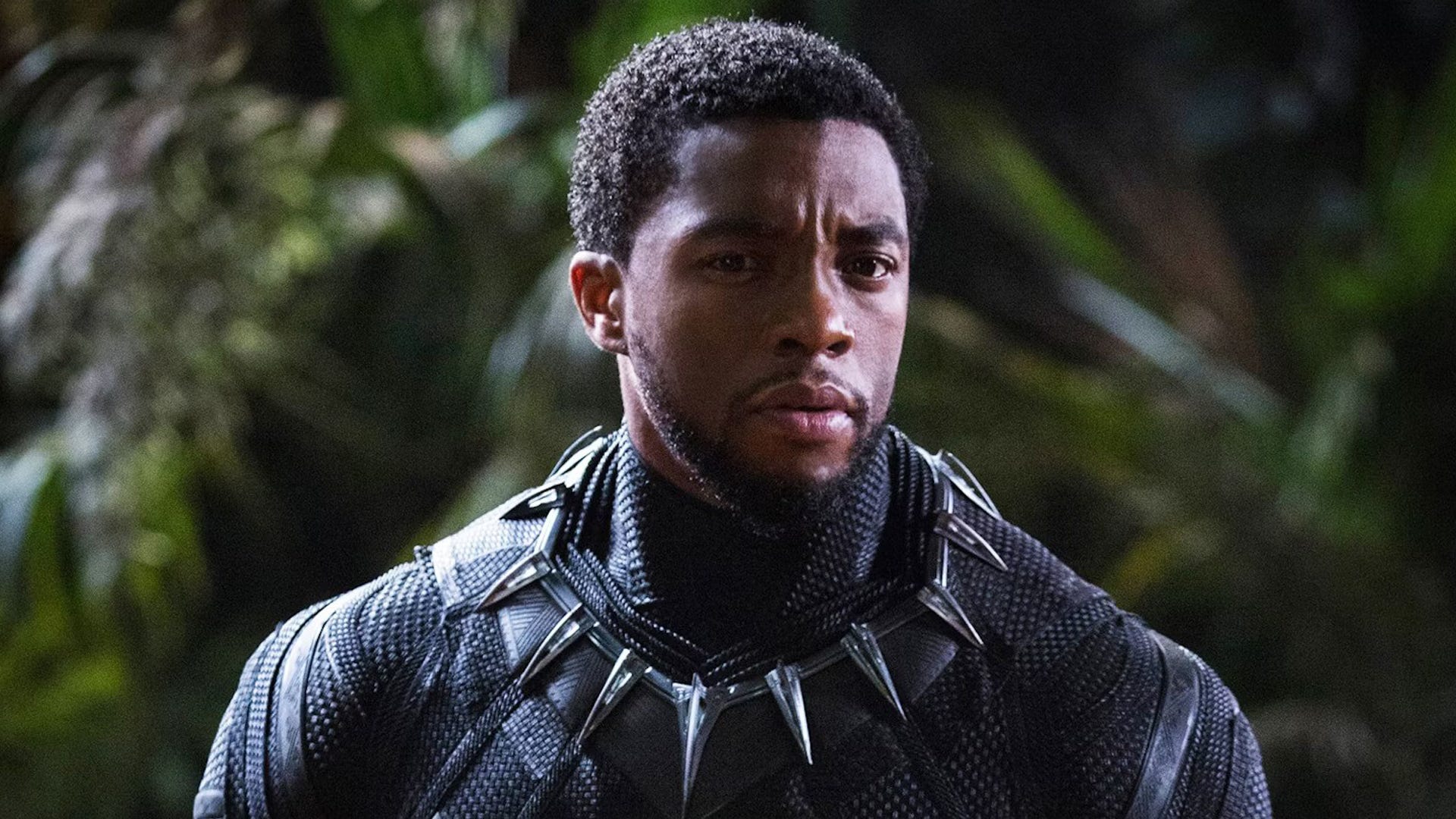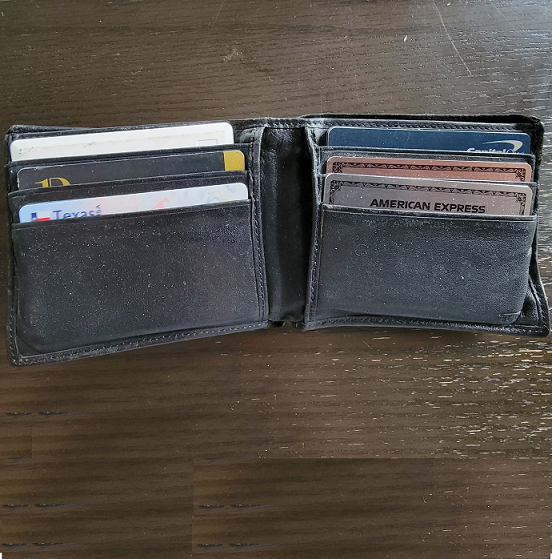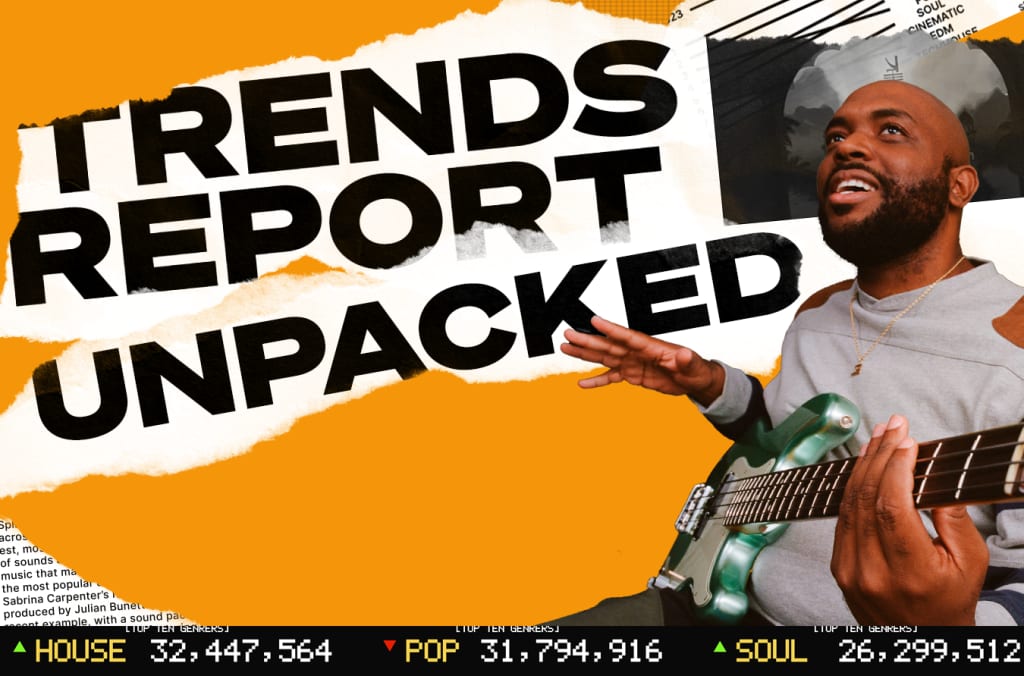Are We Thinking About Gun Violence All Wrong?
The unexpected origins of gun crime

Subscribe here: Apple Podcasts | Spotify | YouTube | Overcast | Pocket Casts
There are two Chicago neighborhoods that are, on the surface, quite similar. They are both more than 90 percent Black; the median age of both is roughly 38. About the same share of people have college degrees, and the median income of both is roughly $39,000.
But one experiences about twice as many shootings per capita as the other.
The University of Chicago economist Jens Ludwig opens his forthcoming book, Unforgiving Places, by describing the neighboring places of Greater Grand Crossing and South Shore, both minutes away from the elite university where he teaches. Ludwig’s argument begins by reframing the problem of gun violence away from the demoralizing story of American exceptionalism and toward the more granular variation that differs state by state, city by city, and yes, block by block.
“Whatever you believe about the causes of gun violence in America, those beliefs almost surely fail to explain why Greater Grand Crossing would be so much more of a violent place than South Shore,” Ludwig writes. “How, in a city and a country where guns are everywhere, does gun violence occur so unevenly—even across such short distances, in this case literally right across the street?”
Talking about gun crime almost always turns into talking about gun-control legislation, a debate that has been happening my entire life and I’m sure will continue past my death. But on today’s episode of Good on Paper, Ludwig and I spend little time on that topic, focusing instead on policy levers that could reduce gun violence but don’t require national gun-control legislation.
The following is a transcript of the episode:
Jerusalem Demsas: In 2022, Louisiana had the second-highest rate of gun deaths in the country. I’m just back from a reporting trip to the Lake Charles area, and I had a few people remark rather pointedly to me that my home of Washington, D.C., is a violent place, seemingly unaware that D.C. has had a significantly lower rate of gun deaths than Louisiana for many years now.
Why do some places see higher rates of gun violence than others? It’s an incredibly important question to answer rigorously. Homicide is a leading cause of death for young adults, and the vast majority of those homicides happen with guns. But this is a topic where the politics rarely line up with actionable solutions.
After the COVID-19 crime wave, politicians have scrambled as they place crime at the top of the agenda again and are searching for public-policy tools to address violence in their communities.
My name’s Jerusalem Demsas. I’m a staff writer at the Atlantic, and this is Good on Paper, a policy show that questions what we really know about popular narratives. My guest today is the economist Jens Ludwig, from the University of Chicago, who has spent his career studying the economics of crime. He has a book coming out in a few months called Unforgiving Places: The Unexpected Origins of Gun Violence.
Jens and I talk about the classic explanations for why gun violence happens in some places and not others. He pushes back against the classic right-wing explanation that the problem is bad people and the classic left-wing argument that solving the problem of gun violence requires ending mass social inequalities first.
One note about the show: We’re going to begin adding the studies and articles and books we reference in the show notes, so you can easily access them for further reading. A link to Jens’ book will be there, too, if you’d like to investigate his argument further.
Okay. Jens, welcome to the show.
[Music]
Jens Ludwig: Thanks so much for having me. It’s such an honor to be here.
Demsas: Jens, you have a book coming out in April called Unforgiving Places. What’s it about? What are you arguing?
Ludwig: The book basically makes two arguments. One argument is that we’re despairing about the problem of gun violence because we’ve thought about it as just all being about gun control, and I think that’s not true. I think the problem of gun violence in America is partly about guns, and it’s partly about violent behavior. And if we can’t do anything about the guns, we can at least try and do something about the violent behavior. And the experiences of L.A. and New York over the last 30 years show us that there’s real progress that you can make there.
And then I think the other core argument of the book is that violent behavior is not what we’ve thought. I think most people have thought of violent behavior in America as being about thoughtful, deliberate action that leads you to focus on incentives, like bigger sticks or more enticing carrots. And in fact, I think most shootings in America are instead fast-thinking, reactive—it stems from arguments. And that leads us away from relying exclusively on incentives and towards a very different type of policy that we just haven’t been talking about or thinking about.
Demsas: When I was reading your book, there was a stat that just has been rattling around in my brain since I read it. You write that shootings account for fewer than 1 percent of all crimes but nearly 70 percent of the total social harm of crime. What does that mean? And how is that even measured?
Ludwig: Yeah. So the way that economists think about that sort of thing is very analogous to how environmental economists think about environmental harm. If you go back to the Exxon Valdez oil spill in Alaska a million years ago, there’s the tangible cost of cleaning up the bay or whatever it is, and then there’s the sort of social costs that don’t show up on any sort of budget spreadsheet anywhere. That’s the “harm to this pristine place now being ruined forever” kind of thing.
And so environmental economists have come up with ways of quantifying those sorts of intangible costs. And we can use the same sort of approach to measure the harm for crime as well. It basically comes down to what people are willing to pay to avoid exposure to different types of crime.
And so what you can see is people really don’t like disorder. They really don’t like having their bicycle stolen, their car stolen. I lived in cities for the last 30 years. I’ve had almost every sort of property crime that you can imagine happen to me. But the thing that people really, really are petrified about is staring down the barrel of a gun. And I can tell you that from firsthand experience. I was held up at gunpoint myself on the South Side of Chicago, going to pick up my older daughter from her piano lesson about five years ago.
My University of Chicago colleague Steve Levitt did a study where he showed that every serious crime that happens in a city reduces the city’s population on net by one person—so fewer people moving in, more people moving out. Every murder that happens in a city—the overwhelming majority of murders in the United States, unfortunately, are committed with guns—every murder that happens in a city reduces the city’s population by 70 people. And I think that’s another way to sort of see exactly how much the gun-violence problem in America is driving the crime problem.
Demsas: I also think it’s just remarkable to really think about this in perspective of how much effort we spend in trying to eliminate certain types of crime. I mean, if 70 percent of total social harm is shootings, then the vast majority of our efforts should just be focused on guns. And property crime should take a backseat, all this sort of thing. Intuitively, we understand that, obviously, murder is worse than other forms of crime, but I think the degree to which that is driving America’s violence problem and crime problem and the harms that ricochet out into communities is, I think, not well understood.
Ludwig: Yeah, I one million percent agree. And I think it also sort of helps you see a path to a criminal-justice system, a law-enforcement system that kind of sidesteps a lot of the current political fights that we’re having. I think everybody agrees that gun violence is a hugely serious problem, that we should be holding people accountable for this.
Even the mayor of Chicago, who I think within the political distribution is one of the more progressive elected leaders in the United States—he’s going around talking about the need to improve the odds that shooters get arrested and wind up behind bars. And so I think this much stronger focus on gun violence would be a way to concentrate everything on the thing that the American public really cares the most about. It sidesteps a lot of the fraught political debates about how we do enforcement over lots of other things that the public doesn’t like, but it’s not the first-order thing that they’re worried about.
Demsas: So there’s familiar pattern that I think most people are aware of when it comes to the gun-policy conversation in the United States, and it’s: There is a tragic mass shooting—maybe at a school, maybe at a nightclub—and then there’s this intense rallying to pass gun legislation.
And economists have quantified this. There’s a study that showed that a mass shooting leads to a 15 percent increase in the number of firearm bills introduced within a state the year following that shooting. Interestingly, in states with Republican-controlled legislatures, those are often laws that loosen gun restrictions. But even when looking at Democrat-controlled legislatures and laws that tighten gun restrictions, studies often struggle to find significant impact of these laws on reducing gun violence, reducing deaths, reducing mass shootings.
In your book, you also seem kind of pessimistic about the potential for gun legislation to have a large impact on reducing gun deaths. Why is that?
Ludwig: Yeah. Let me respond in two ways. The first is: Federal gun laws set a floor, not a ceiling, on what cities and states can do. And so lots of cities and states around the country, including my home city of Chicago, have enacted gun laws that are more restrictive than what you have under the national law. And the problem with that is that we live in a country with open city and state borders. So what Gary, Indiana, is doing about air quality affects the South Side of Chicago, and vice versa, right?
And in the same way, like, my family for the last 18 years has lived in Hyde Park, on the South Side of Chicago. Our favorite ice-cream place in the area is Dairy Belle in Hammond, Indiana. So we spend 20 minutes driving down there every summer, like, way too often. And when we come back from Indiana into Chicago, nobody stops us at the city border to check what we have in our trunk.
And when you look at where the crime guns are coming from in Chicago, almost none of them come from a gun store in Chicago. They come from places like, you know—there are gun stores quite close to Dairy Belle in Indiana that are big sources of crime guns in the city. So I think the way that you want to be thinking about gun regulation, I think, is very analogous to how you would do something like regulate air quality. And that’s to think about regulation at the national level in a world in which you’ve got what an economist would call lots of externalities across jurisdictions in their own laws.
Demsas: But even federal gun-control legislation has often felt, at least from my overview of the economics literature, like it hasn’t had a massive impact, whether it’s assault-weapons legislation or other forms of gun-control legislation that’s passed over the past few decades. Is that just a reflection of the fact that these laws are pretty modest in what they’re attempting to do? Or does that indicate that we can’t really attack this problem legislatively?
Ludwig: What I would say is: Most of the national gun laws that we’ve enacted in the United States are very modest, as you said. I think the biggest problem with the gun laws that we have in the United States is: Most of the laws regulating gun acquisition—you know, gun sales—only apply to gun sales that are, basically, carried out by a licensed gun dealer.
And that’s something like 50 or 60 percent of all gun sales in the U.S. And the other 40 percent are almost completely unregulated under federal law. Some states try and regulate that, but that’s not a loophole—that’s like a chasm that you can drive a truck through. And you know, when you look at where the guns used in crime come from, you wouldn’t be surprised to see that’s the most important source of crime guns that you see in Chicago and other cities around the country.
But you know, I think the difficulty of cities and states regulating their way out of the gun-violence problem, and the difficulty of substantially changing national gun laws, has led a lot of people to conclude that gun violence in America is a hopeless problem, because we can see that the gun-control politics are stuck.
So one way that I’ve come to think about this is that that’s too pessimistic a view. And the reason for that is that gun violence is not just about guns; it’s about guns plus violence. So it’s having lots of guns around, but also having people who use them to hurt other people. And if we can’t make much progress on the gun-access part of things, the good news is that there’s a second path to progress, which is to try and change the willingness of people to use guns to hurt other people.
We have something like 400 million guns in the United States, in a country of about 330 million people. And I think the existence proof that shows us that you really can make a huge difference on the gun-violence problem by figuring out how to control violence comes from the Los Angeles and New York City experience over the last 30 years.
So in 1991, the murder rate per 100,000 people in L.A. and New York was very similar to Chicago, actually, at that time. It was something like 30 per 100,000. So to give you a sense of what that means: In London, the murder rate is something like one or two per 100,000. So the United States is just totally off the charts. Almost all of those extra murders here are committed with firearms.
And in the 30-year period following that—so 1991 (the peak of the crack-cocaine epidemic), 30 years after that, up through 2019 (the last year before the pandemic)—the murder rate in Los Angeles declined by 80 percent; the murder rate in New York City declined by 90 percent. And those are cities that are swimming in the ocean of, you know, hundreds of millions of guns in America. And I think that speaks to a more optimistic take, that it is not a hopeless problem—not just that something can be done but that something substantial can be done.
Demsas: The other variation you point to in your book that is what really intrigued me is that Canada and Switzerland also have above-average rates of gun ownership, but they don’t have particularly high rates of murder in line with what we would expect if you just took America’s experience. And I think I had this kind of model in my head that it’s just like, If you have this many guns, there’s nothing you can do. Like, that’s the situation. There will be variations based on other things, like whether the economy is doing well or whether we’re incarcerating people or not, or how many cops there are on the street and what they’re doing. You’d still see variations in crime, but you would always have some kind of baseline level of criminality.
But I want to get to the core argument of your book, which I think is maybe encapsulated by a pretty provocative question on the back cover, which says, “What if everything we understood about gun violence was wrong?” This is a very bold claim, and I’m excited to explore it with you. But I think that the first part of that is unpacking what it is that you mean by “everything we understand about gun violence.” You lay out two competing theories that Americans hold about the causes of gun violence. One is the “root causes theory” and one is the “wickedness theory.” Can you just walk us through what those two are?
Ludwig: Yeah, the conventional wisdom in America right now says that violent behavior is thought through, right? So it’s either bad people who aren’t afraid of whatever the criminal-justice system is going to do to them, or it’s people in bad economic conditions who are desperate in doing whatever they need to do to survive. And both of those conventional wisdoms on the right and the left actually have something in common, which is: They think of gun violence as being sort of a deliberate behavior, and that leads us then to focus on incentives to solve the problem. You know, We need bigger sticks, if you’re on one side of the aisle, or if you’re on the other side of the aisle, We need more enticing carrots.
I think the thing that’s so striking is that it just doesn’t fit with what all of the data tell us gun violence in the United States is. Most shootings are not premeditated, and most shootings are not motivated by economic considerations. They’re not robbery. They’re not drug-selling turf. That’s all what psychologists would call “System 2” slow thinking.
Most shootings, instead, stem from arguments. They’re reactive, or what psychologists would call “System 1” thinking. And the fact that so many shootings stem from these sorts of in-the-moment conflicts that go sideways and end in a tragedy because someone’s got a gun, that helps explain why deterrence is imperfect. Someone acting very reactively is not thinking through a jail sentence. And it also helps explain why a social program that’s intended to reduce poverty—like give somebody a job, give somebody cash, whatever—that also isn’t solving the violence problem.
Demsas: I want to hold here a bit because I think this question, Are people making rational calculations? is both at the heart of a lot of economics and also the heart of what we’re going to talk about for the rest of this episode. And I accept that I do not think that I or anyone else is constantly doing a benefit-cost analysis about every action that I take, even if it is as important as whether you pull out a gun and shoot someone.
But I wonder whether that undersells the rationality that still exists, right? Because we know that deterrence is possible. We know that when we increase the certainty of capture—if you know you’re going to get caught for shoplifting, if you know that you’re going to go to jail if you shoot someone—that significantly decreases crime incidents. And what that indicates to me is that there is a level of benefit-cost analysis happening, even if people aren’t fully using that System 2 part of their brain.
Ludwig: Yeah, I one hundred percent agree that deterrence is really a thing. I’m a card-carrying economist. I work at the University of Chicago. I totally believe that incentives matter and that deterrence is a thing. But I think that this really connects very importantly to where we started, that gun violence is the part of the crime problem that is the thing that drives the total social cost of crime.
So in many ways, crime is an unhelpfully broad term. It’s almost like disease. What would you do about disease? I mean, I don’t even know how to think about answering that. Like What are we talking about? Like, pneumonia or cancer? And crime is a similarly unhelpful, super-broad umbrella.
And there was a study, for instance, done in Sweden a few years ago where they looked at what happened when you put cameras up in the subway system. And what you could see is that property crimes go down when you camera-up the trains, but violent crime doesn’t go down, right? And I think what that tells you, partly, is that different behaviors are shaped differently.
The key breakthrough of behavioral economics and behavioral science over the last couple of decades is to realize that our minds work in two different sorts of ways. There’s the deliberate, sort of rational benefit-cost calculation that psychologists call System 2, and a sort of very reactive, automatic, below-the-level-of-consciousness cognition that psychologists call System 1—or fast thinking and slow thinking.
And different behaviors are driven by different types of cognition. And so stealing a loaf of bread to feed your family is much more System 2 than what you do in an argument. Let me just point the finger at myself, first and foremost here. I’m not saying anything about other people’s behavior that is not true of my own behavior.
I’ve lived for 18 years in Hyde Park. It’s a little University of Chicago village in the middle of the South Side of Chicago. Every Wednesday morning, I take my dog, Aiko, out for a little walk. One day, I’m walking down the street, and about three or four doors down from me, there’s a neighbor whose dog is off leash, runs down the driveway, and attacks my dog.
Demas: Oh God. I hate that.
Ludwig: No, exactly. And this guy, the neighbor—his kids are literally in the same classroom as mine at the lab school. He lives four doors down from me. I have every incentive in the world to handle that gracefully and constructively. And that’s exactly what System 2 rational thinking would have done.
It turns out: That is exactly not what I did in that case. I assume this is a podcast where people don’t curse, but you can only imagine the stream of four-letter, seven-letter, and twelve-letter words that came out of my mouth at this guy who I’m going to be seeing for years into the future. I’m going to be seeing him at the parent potluck at school.
And so it really speaks to this idea of: In these super high-stakes moments, where people just don’t have very much bandwidth and they are relying on sort of very fast thinking to navigate, we are not always our best selves. We are not thinking about benefits and costs and things off into the future. We can make mistakes. All of us can make mistakes.
And in my case in Hyde Park, I was very lucky that neither one of us had a gun. But in a country with 400 million guns, you know, lots of people are in situations like that and behave the way I did and, unfortunately, they or the other person’s got a gun, and it ends in tragedy. And those tragedies, really, I would just point out, claim two lives. Somebody does something stupid in a moment and, you know, you spend the rest of your life in prison, and somebody else winds up dead. It’s multiple tragedies stemming from that.
Demsas: First, is your dog okay? Was everything fine?
Ludwig: Yeah, she’s a big chicken. She’s, like, a 70-pound shepherd mix who decided, rather than to try and defend herself or whatever, she would—I don’t want to throw my dog under the bus here. Everything turned out fine. She’s a lover, not a fighter. (Laughs.)
Demsas: (Laughs.) Your dog also is in System 1 thinking.
Ludwig: Yeah, exactly.
Demsas: Well, first, we’ll shout out the late Danny Kahneman here and his Thinking, Fast and Slow book, which provides much of the foundation of the System 1, System 2 model that you’re talking about here.
But I want to push here a bit because I think one of the common objections people have to this line of argument is that, yes, it is the case that, whether someone’s coming at you or you’re worried about your dog, and you don’t react the in the way that you might if you used your logical brain to react if you had time to think—but given that if you place every single American in the exact same conditions, you still see large variations in how people choose to respond, right? Like, all the people who are in conflicts in the South Side of Chicago do not shoot each other. A very small minority of people are choosing to shoot each other, even if they have access to a gun.
And so doesn’t that push against this idea that the problem is this System 1 thinking? Like, there is something particular about the choice to pull out a gun and kill someone in that moment. And it’s not just, Well, anyone can make that mistake, because even if you think about this demographically, we’re seeing mostly young men make this mistake and make this choice. There is something going on here that is not just, You’re not able to think under stress.
Ludwig: Let me take your question and sort of turn it on its head for a second. One of the things that I point out in the book is like a version of an observation that Jane Jacobs made 60 years ago in her book The Death and Life of Great American Cities, which is: When you look at similarly poor neighborhoods in American cities, you see huge variation in crime rates, especially violent crime.
And as I mentioned, I lived for a long time in Hyde Park, on the South Side of Chicago. There are two neighborhoods just south of Hyde Park. There’s Greater Grand Crossing and South Shore that are socio-demographically, historically almost identical in terms of their racial and ethnic composition, their socioeconomic composition. They’re adjacent neighborhoods, so they’ve got exactly the same gun laws; they’ve got exactly the same social policies. When people get caught, they get sent to exactly the same court system. So all the incentives that conventional wisdom would say would matter are identical. And yet the shooting rate per 100,000 is, in most years, about twice as high in Greater Grand Crossing than literally across Dorchester Avenue in South Shore.
Demsas: Wow.
Ludwig: So that’s sort of taking the premise of your question and noting that the incentive explanation certainly doesn’t explain all of the variation that you see in gun violence either.
So what could it be then? I one million percent agree with you that—at its core, the argument here is: People are people, and a lot of what determines the outcome of this interpersonal conflict is the situation that someone finds themselves in. But if it’s not socioeconomics, and it’s not the characteristics of the criminal-justice system, what else would it be?
And I think in many ways, Jane Jacobs was really onto something 60 years ago in thinking about what that thing would be. To sort of connect an experience that I had in Chicago a couple years ago to Jane Jacobs’ insight, I was in the juvenile-detention center on the West Side of Chicago, I’m talking to a staff leader there, and he says, I tell all the kids in here, “If I could give you back just 10 minutes of your lives, none of you would be here.”
And one of the insights that Jane Jacobs had 60 years ago is: If the problem here is people do things in these 10-minute windows that they later regret, you could almost sort of think of fraught social interactions as like a high-wire act. And one of the ways that you can help people is by—what do they do in the circus for high-wire performers? They have a safety net there.
And one of the safety nets that you have much more of in some neighborhoods than others is essentially what Jane Jacobs called “eyes on the street”—prosocial adults who are around and able to step in and deconflict things when it happens. And you could see exactly that when you look at South Shore versus Greater Grand Crossing.
So there is, for instance, much more commercial development in South Shore than in Greater Grand Crossing. And what that means, in practice, is that there’s just lots more foot traffic in the community in South Shore than Greater Grand Crossing. And so if a group of teenagers is getting into an argument, there’s more likely to be, like, a neighborhood adult around to step in.
It’s also the case—so my friends Sendhil Mullainathan and Eldar Shafir have a wonderful book that came out a couple of years ago, called Scarcity, where they point out that one of the many challenges of being poor in the United States is living in day-to-day circumstances that tax mental bandwidth. It’s just very stressful, right? And people with limited bandwidth wind up relying much more on System 1 than people who are less bandwidth taxed.
So when you look at the data, you can see all sorts of indicators that there’s much more stress and bandwidth tax for people living in Greater Grand Crossing than South Shore. And what that would lead you to conclude is that the people who are in Greater Grand Crossing are going to be more likely when they’re in these difficult, 10-minute, fraught interactions with somebody else to rely on System 1 to navigate that than their more deliberate, rational benefit-cost-calculating selves.
So I think the sort of left-of-center perspective that there are root causes that matter is definitely right. I think it’s totally right for property crime—you know, crimes shaped by economic considerations. I think it’s just a little bit incomplete with respect to the part of the crime problem that the public cares the most about, which is gun violence. And so I think we just need to expand our lens about what aspects of the social environment we want to be prioritizing for our public policies.
Demsas: I’m a housing person, so I’m a big fan of the Jane Jacobs book and the argument that she kind of draws out, and I think people can imagine this if they’ve been in streets and communities like this before, is when you have kind of mixed-use development—you have a coffee shop, and above that coffee shop, you have apartments, and across the street, there’s also a park, and there’s also a school nearby—is that that means that throughout the day, there are many different kinds of people watching the streets.
Versus if you had just a fully residential area, and then during the day, everyone’s basically gone because they’re either at school or work, so it really empties out of people to watch things. Or if you have a fully industrial area, where when people go home for the day, there’s nobody there. Or commercial area, same thing. And so when you have these kinds of mixed-use-development areas, it feels a lot safer because you can just always feel like there’s someone around doing normal business or taking their kids to school or whatever.
So I would love for housing policy to be the key. But is your argument, then, that the differences between neighborhoods that have similar socioeconomic problems, similar legal environments, etcetera but a large variation in gun violence is largely a function of their urban form?
Ludwig: I just—I absolutely adore that this is a sort of empirical, data-intensive, data-nerd podcast, and so in that spirit, I do think one of the big challenges for making progress on the sort of the crime and criminal-justice problem is: A lot of it is editorializing rather than guided by data. And so I think one of the key things that I tried to do in the book is really stick to the data and see what the data are telling us.
And so does the built environment matter? There was a wonderful study by Mireille Jacobson and Tom Chang that looks at what happens in Los Angeles when marijuana dispensaries open or close as a result of some regulatory change and when food places open and close.
That’s like the natural experiment of Jane Jacobs, like, let’s put in more mixed use—and what you can see is that when a retail establishment closes and foot traffic goes down, crime goes up.
There was a wonderful study by a great team at the University of Pennsylvania that worked with the City of Philadelphia to do a randomized experiment where they picked a bunch of rundown, vacant lots all over the city and picked half of them to redevelop and turn into little pocket parks. And what you can see is that the pocket parks then wind up bringing more people out of their homes and spending time there in public. And you can see that people feel safer, and they are safer. Gun violence goes down as a result of that.
My research center, the University of Chicago Crime Lab, we did a randomized trial with the City of New York a couple years ago where we helped put increased street lighting in some public-housing developments and not others. And one of the things that that would do is also potentially get more people out in public. We see violence decline there as well.
And then one other thing that I would just add—actually, two other quick things that I would add to this is: I think it gives you another way to understand all of the research and economics that suggests more police reduce crime. I know you had Jen Doleac on recently; you guys were talking about this.
I think most people would say, Oh that’s, like, deterrence or incapacitation. But when I look at the Chicago Police Department, for instance, the average Chicago cop makes about three arrests—not per week, not per month—per year. Three arrests per year.
Demsas: Wow.
Ludwig: So it’s, like, not a gigantic arrest machine that is generating all of this massive deterrence. What are police doing? Well, one of the things that they might be doing is helping interrupt these 10-minute windows. It’s something preventive, right? And I think that is a potentially important part of it.
And the thing that I would add to this, as well, is that sociologists believe that one of the most important determinants of a neighborhood’s violent-crime rate is what they call “collective efficacy”—this is research from the 1990s—the willingness of neighborhood residents to sort of step in and do something when there’s some sort of problem in the neighborhood. And I think that also is very consistent with this kind of behavioral-economics view of the gun-violence problem and what to do about it.
[Music]
Demsas: After the break: the problem with focusing on the “root causes” of gun violence.
[Break]
Demsas: Someone listening to this will say, How is this different from the root causes analysis that you kind of critiqued? Right?
Because there’s a really great quote that you have in your book, which is that we “treat gun violence as something that will get better once we fix everything else that’s wrong with society.” And I think that’s a frustration that a lot of people have, is that they are sympathetic to the idea that if we invested more in education, or if we invested more in social-welfare programs and UBI (universal basic income), expanded health care, that there would be reduced crime in 20 years, in 30 years.
But that doesn’t really respond to the specific concern of, Tomorrow when I walk to school, am I going to get shot? Can you help distinguish between your analysis and that root cause analysis?
Ludwig: What I hear in Chicago is something that you hear in lots of cities around the United States, is like, Gun violence is just a symptom of poverty, and we’re never going to solve the gun-violence problem until we solve the poverty problem.
And let us all hope that’s not true, because, as you know even better than I do, we’ve been working really hard for decades to try and solve the poverty problem in the United States, and it’s proven to be very difficult. I think the key optimistic observation or suggestion that we get from this behavioral-economics perspective on the gun-violence problem is: We can make massive changes in the gun-violence problem by changing parts of the social environment that are much easier to change than poverty and segregation and all of these other super big, super important social problems.
If I could wave a wand and I could end poverty and segregation in Chicago, believe me—I’d be the first person to wave that wand. And so I’m not arguing against any of the policies trying to do that. They’re super important. It’s more like, What else can we do on top of that to really start to make a meaningful difference on the gun-violence problem?
And I can’t wave a wand and end poverty in Chicago, but what I can do is: I can make it easier to have commercial development in Greater Grand Crossing than we currently have here on the South Side of Chicago. I can strategically deploy money to turn a bunch of vacant lots that are littered with empty broken beer and tequila bottles and turn that into a little pocket park that people are willing to be in. I can put money into things like block clubs. I can do some version of what the University of Chicago does, like put unarmed private security guards on some key corners to make sure that there’s an eye on the street because of that. So there’s a bunch of pragmatic things that you can do that can really make a difference that sort of complement these other efforts to address these really big root causes.
And maybe the one other thing I would just add: You might look at that sort of strategy and say, To some people, that’s going to feel unsatisfying that it is addressing a symptom, not the underlying cause. Like, we’re leaving the root causes there, and we’re just treating the symptom of the root causes. But I actually think what that concern or that perspective misses is that the causal arrow runs in both directions between gun violence and root causes, if that makes sense.
And you can sort of see a lot of these communities are in vicious cycles right now, where it’s like: You’ve got a lot of gun violence. People and businesses leave—fewer eyes on the street, fewer community resources to build the kind of public infrastructure that helps address this problem, even more gun violence, even more people leaving. There are lots and lots of neighborhoods, lots and lots of cities that are trapped in that sort of vicious cycle.
But if you can get the gun-violence problem under control. I think you can see that you can turn those vicious cycles into virtuous cycles. I think of gun violence, you know, not as a symptom of some deeper thing but in many ways as the social problem for cities that sits upstream of so many of the other social problems that cities are trying to wrestle with.
Demsas: To give your model in layman’s terms: Gun violence and shootings happen because there’s a large availability of guns and because people are not interrupted in pulling those guns out in the midst of a heated moment. So as you point out in your book, the vast majority of shootings are happening in the course of an argument—not in a premeditated sense but in [the sense] that someone bumps you on the sidewalk, or they insult you, or something like that—and that violence, that shooting happens because there’s no one to step in and say, Hey. Let’s calm things down. Is that kind of the overview that you’re giving us?
Ludwig: Yeah. The highest-level version of this is: All of our policies have conceived of gun violence as a problem of System 2 slow thinking, when I think it’s, actually, mostly a problem of System 1 fast thinking.
And so for starters, we just need a big reorientation to understand differently what the problem actually is to be solved. And once you have that reorientation—once you sort of think of gun violence as a problem of not bad people unafraid of the criminal-justice system, not people in bad economic circumstances stealing to feed their families, but normal people making bad decisions in fraught, difficult, 10-minute windows—one thing that you start to do then is start to think about, How do I change the social environment so there are more people, more eyes on the street to sort of step in and interrupt? And the other thing that you start to think more seriously about is, like, How do I focus my social policies more on helping people understand their own minds better and anticipate what they’re going to do in these difficult 10-minute windows?
And one of the ways that we can do that is through a very different type of social program than we’ve typically thought of in the U.S.—these behavioral-economics-informed programs like Youth Guidance’s Becoming a Man or Heartland Alliance’s READI program or YAP and Brightpoints’ Choose to Change program. These are all things that we’ve subjected to randomized controlled trials in Chicago.
And what they basically are doing is: They’re helping people understand that they’ve got fast thinking as well as slow thinking and recognize that their fast thinking can get themselves into trouble in these fraught moments, and helping them anticipate that and sort of better navigate those 10-minute windows. And you can see in randomized experiments that that reduces risk of violence involvement by, depending on the study and the time period, like, 30 to 50 to 60 percent. How you scale that, I think, is the frontier scientific and policy challenge, but at least now we can sort of see the direction that we’ve got to go.
And the other thing I would just add is: I think this behavioral-economics perspective also helps us understand why education is so important for solving the violence problem, but not in the way that people have historically thought. Most people would say, Yeah, of course, education is so central to solving the crime problem, because education improves people’s earnings’ prospects, and blah, blah, blah.
And it’s true that education is hugely important for people’s earnings prospects, and education is good for making better citizens. It is good for lots and lots of reasons. But the other thing that the data tell us education does is: It helps people learn to be more slow thinking and skeptical of their own minds in high-stakes moments. That turns out to be sort of a key byproduct of everything that schools ask people to do.
And I think of education as, like, in many ways, the most important sort of crime-prevention, gun-violence prevention tool that we have. I think things like rote learning are not what we want either for educational purposes or from the perspective of making schooling as sort of crime preventive as possible. And so I think there are other ways of reimagining what school does, which would be good for making school sort of more helpful for a world in which things like problem-solving are increasingly important for economic outcomes, but also super valuable for making education more helpful in addressing the gun-violence problem.
Demsas: You alluded to this a couple of times now, but it’s interesting that there’s one way to interpret your result as just, as like, We need to put a bunch more cops on the street, and those can be the eyes on the street. And that is kind of consistent with the literature we explored in the Jen Doleac episode around why increasing numbers of police officers can reduce crime, and violent crime, in particular. And the other avenue—I mean, these are complementary—is that there needs to be more attention on how to improve people’s System 1 thinking. And the Becoming a Man program, which I think is now really popular, is a great example of that.
But scaling these sorts of things is really, really difficult, as you mentioned. Are you indifferent between these two policy avenues, like an increased number of police officers, versus investing in programs that improve people’s ability to understand their own System 1, System 2 thinking? Or is it that you really want people to do one of those over the other? And in which case, it does seem very difficult to scale Becoming a Man and other programs. We have not been able to do that, despite years and years of positive coverage of that program.
Ludwig: For starters, I would say, we should be pushing on every possible front to solve this problem. It’s a huge humanitarian problem, one of the key drivers of Black-white life expectancy disparities in the United States, hugely important for the future of our cities that are the key economic engine for the whole country. So I wouldn’t say, like, Let’s do this or this. If we have multiple things that could be helpful, I’d say, Let’s push on every front.
On the eyes-on-the-street stuff, I would say, There’s tons of scalable stuff there, and it’s not just hiring more cops. So you can hire more cops in cities that like cops. You can put unarmed security guards on the street. You can fund community-violence-intervention nonprofit groups. You can clean up vacant lots and turn them into parks. You can improve street lighting. You can change zoning laws and permitting rules and whatever to make it easier to have stores interspersed with residential in a neighborhood. Tons of different things there that you could do, depending on the local political environment in your city, all of which are super scalable, all of which would be super helpful, all of which would increase the chances that there’s some sort of prosocial adult around who can sort of step in and de-escalate something.
On top of that, I think then there’d be huge value in trying to figure out how to scale the social programs that also help people better understand their own sort of thinking. And I think one of the most exciting visions for the future here comes from artificial intelligence, weirdly. My University of Chicago colleague Oeindrila Dube did a fascinating study with Sandy Jo MacArthur, who used to be at LAPD for many years, and my friend Anuj Shah, at Princeton.
They basically did Becoming a Man for cops. And what was so interesting about it is: Becoming a Man works with teenagers in middle school and high school. And it’s, like, an adult working with these kids, and that’s super hard to scale, because the program counselor is expensive, and they vary in skill, and How do you hire enough people? and everything that makes a social program hard to scale.
But the Becoming a Man for cops—what they did is they had this artificial-intelligence-driven force simulator thing, where they give cops feedback to see when their System 1, their fast thinking, is leading them to an unhelpful response, through a bunch of simulation exercises that the AI can do. And you look at the randomized control data, and it seems to have remarkably helpful impacts.
And I think the thing that’s so exciting about that is: Thinking about AI as a human-capital development tool lets you see, Oh I see. Once you’ve got the software, the marginal cost for rerunning software is super low. And the great thing about software is that it basically runs the same way over and over again. So we might be looking at a future where AI can be a super valuable way to enhance human capacity in ways that include addressing one of the most important social problems facing cities, which is gun violence.
Demsas: We’ve gotten a little bit into this, but trying to compare all three theories that are kind of existing out there: When we’re thinking about the root causes theory, that leads us to believe that we should invest a ton in antipoverty measures and expand healthcare, job-training opportunities, UBI, whatever. And then the wickedness theory kind of indicates that we should just try to root out and incarcerate bad people for as long as possible to prevent them from doing crime. Your theory, the “unforgiving places” theory—what do you want policy makers to take from that?
Ludwig: The first thing I want policy makers to take from this is to recognize that the gun-violence problem itself is different from what we think. Again, it’s not a problem of System 2 deliberate, slow thinking, people responding to incentives. Gun violence is mostly driven by System 1, reactive, fast thinking. That’s the most important thing.
From there, I would say we need to do two types of things. We need to change those aspects of the social environment that reduce the risk that conflict escalates. And related to that is, too, just in the safety net, is whatever your position on the Second Amendment, I think this is also why guns out in public are particularly worrisome. If people want to have 500 guns in their basement locked up, that’s one thing. But when people are taking guns out on the street, that’s the thing that makes interpersonal conflict on the South Side of Chicago so much more dangerous than interpersonal conflict in the south side of London or whatever. So people around to deconflict conflict when it happens, and anything that we can do to get guns off the street would be super helpful.
And then I think policies that help people, you know, both K–12 education and things like, you know, Becoming a Man to try and help people better anticipate and navigate those 10-minute windows. And that’s a policy agenda that really doesn’t make much sense under either the conventional wisdom of the left or right, right now. Those things aren’t about changing people’s incentives, so it’s like, Why in the world would they possibly work? But I think they’re really central to making huge progress on the problem. And I think if you look at the experiences of L.A. and New York over the last 30 years, they validate that view, or they’re certainly very consistent with that view, at least.
Demsas: Jens, always our last and final question: What is an idea that you once thought was great and ended up being only good on paper?
Ludwig: Great—so we launched a big research project with the superintendent of the Chicago Public Schools a couple of years ago. The huge priority of this superintendent was truancy. So Chicago used to have something like 150 truancy officers for its 600 schools in 1991, and with budget cuts, they got rid of all of them. And then you look at the data and, like, there are tons of kids who are missing three or four weeks of school a year.
And so you look at that, and the superintendent is like, This surely is a key reason that kids are not doing well in school. So Jon Guryan and I launched this big research project with CPS, and we worked really hard to try and figure out how to get kids to come to school more often, without the punitive whatever of truancy officers. With a bunch of partners, we managed to figure out a way to get kids to come back to school more often. And then we look at the data, and we see it does not boost their learning at all.
Demsas: Oh wow.
Ludwig: So weird, so counterintuitive. You would think, If you don’t go to school, you can’t learn. It’s super intuitive. And yet, you get kids to come to school more often, and they don’t learn.
Demsas: Wait. What’s going on? Doesn’t that kind of conflict with a lot of ed-policy research?
Ludwig: Yeah. So super weird, right? And so it was only very recently that Jon and I were looking at data right after the pandemic, and what you can see in the data is, for instance, if you look at eighth graders in Chicago, the average eighth grader in Chicago academically is like a sixth grader. And something like a third-ish of Chicago eighth graders academically are, like, closer to fourth graders.
Demsas: Wow.
Ludwig: And the eighth-grade teachers—their feet are being held to the fire to teach eighth-grade content. And so then you ask yourself, Why is it the case that sending a kid who, academically, is at the fourth-grade level to school to be taught eighth-grade content doesn’t improve their learning? Like, to ask the question is to answer it.
Demsas: So it’s like, basically, the kids who are missing a bunch of school are more likely to be the kids who are way behind in school. And so they’re going to benefit less from being in school.
Ludwig: Exactly.
Demsas: Oh wow. That’s a very depressing answer.
Ludwig: Yeah, we were confusing, you know, What is a cause, and what is effect? And so it seemed good on paper. Now we realize that there’s a very different underlying problem that we’re working hard to fix. But that’s my depressing answer to leave you with.
Demsas: Well, thank you so much for coming on the show. This was fantastic.
Ludwig: Thanks so much for having me on. It was great.
[Music]
Demsas: Good on Paper is produced by Rosie Hughes. It was edited by Dave Shaw, fact-checked by Ena Alvarado, and engineered by Erica Huang. Our theme music is composed by Rob Smierciak. Claudine Ebeid is the executive producer of Atlantic audio. Andrea Valdez is our managing editor.
And hey, if you like what you’re hearing, please leave us a rating and review on Apple Podcasts.
I’m Jerusalem Demsas, and we’ll see you next week.
